Hydraulic machines are defined as those machines which convert either hydraulic energy (energy possessed by water) into mechanical energy (which is further converted into electrical energy ) or mechanical energy into hydraulic energy. The hydraulic machines, which convert the hydraulic energy into mechanical energy, are called turbines while the hydraulic machines which convert the mechanical energy into hydraulic energy are called pumps. We discussed different types of Hydraulic turbines in the previous article. A draft Tube is used for discharging water from the exit of the turbine to the tail race. In this article Let us discuss the Draft Tube Types, Theory and Efficiency of the Draft Tube.
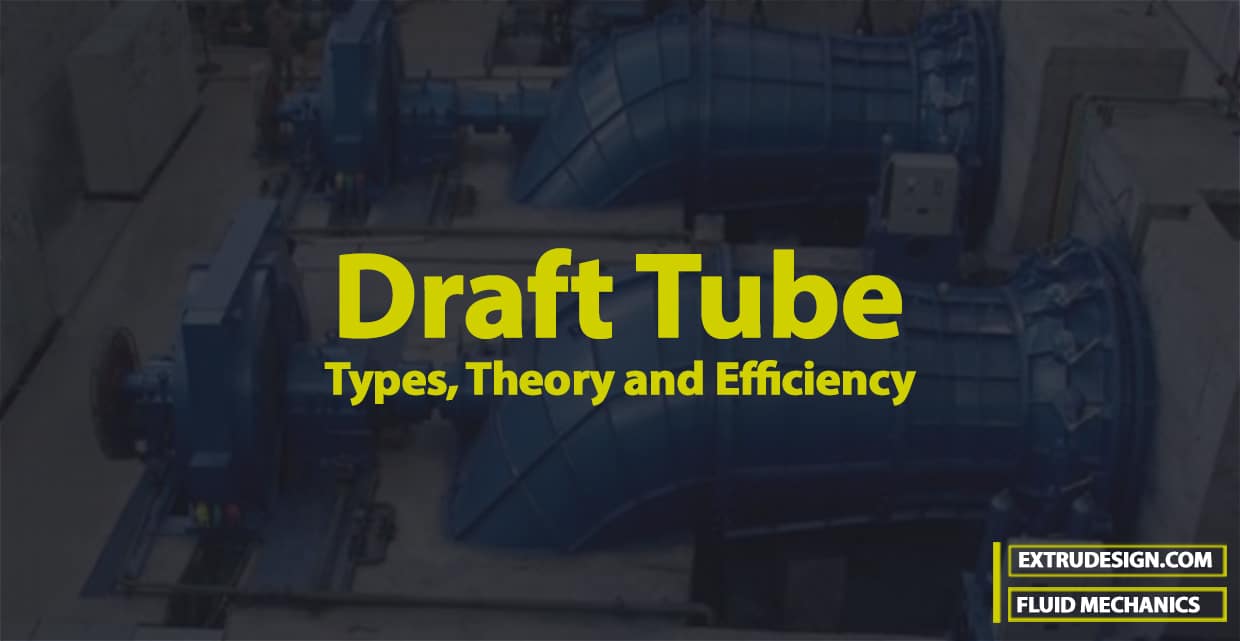
Draft Tube
The draft tube is a pipe of the gradually increasing area which connects the outlet of the runner to the tail race. It is used for discharging water from the exit of the turbine to the tail race. This pipe of the gradually increasing area is called a draft tube. One end of the draft tube is connected to the outlet of the runner while the other end is sub-merged below the level of water in the tail race.
Draft Tube Purpose
The draft tube, in addition, to serve a passage for water discharge, has the following two purposes also:
- It permits a negative head to be established at the outlet of the runner and thereby increases the net head on the turbine. The turbine may be placed above the tail race without any loss of net head and hence turbine may be adequately inspected.
- It converts a large proportion of the kinetic energy (V22/2g) rejected at the outlet of the turbine into useful pressure energy. Without the draft tube, the kinetic energy rejected at the outlet of the turbine will go to waste in the tail race.
Hence by using the draft tube, the net head on the turbine increases. The turbine develops more power and also the efficiency of the turbine increases. If a reaction turbine is not fitted with a draft tube, the pressure at the outlet of the runner will be equal to atmospheric pressure. The water from the outlet of the runner will discharge freely into the tail race. The net head on the turbine will be less than that of a reaction turbine fitted with a draft tube. Also without a draft tube, the kinetic energy (V22/2g) of the tail race.
Draft Tubes Types
The following are the important types of draft tubes which are commonly used:
- Conical draft tubes
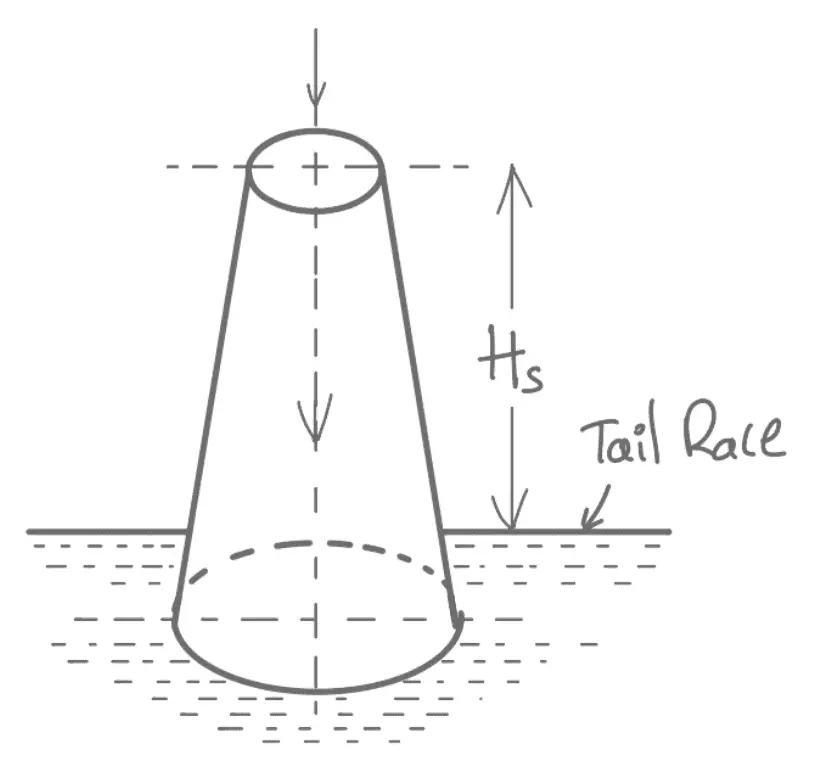
2. Simple Elbow
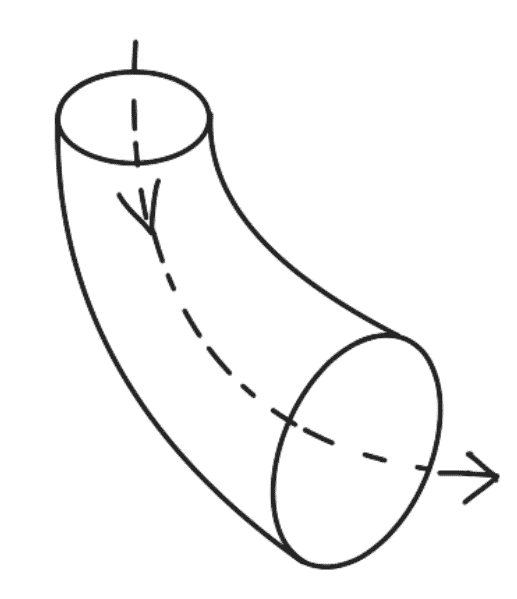
3. Moody spreading tubes
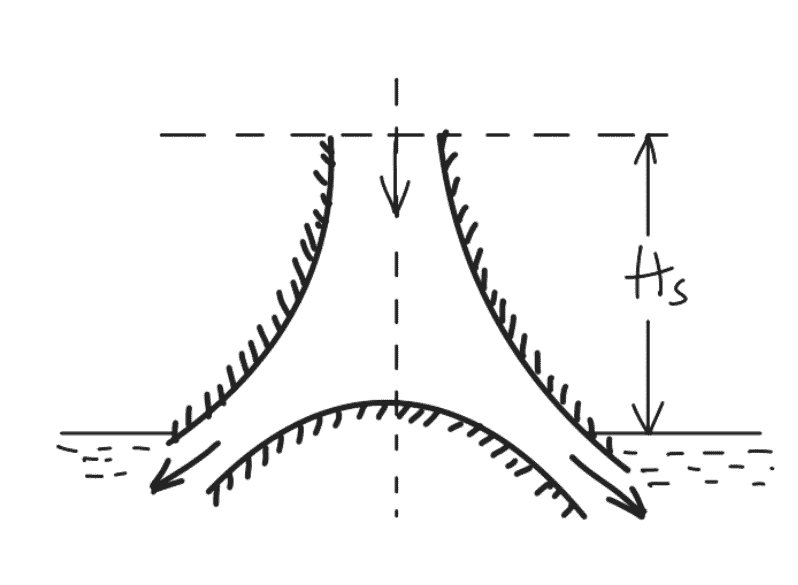
4. Elbow draft tubes with circular inlets and rectangular outlet
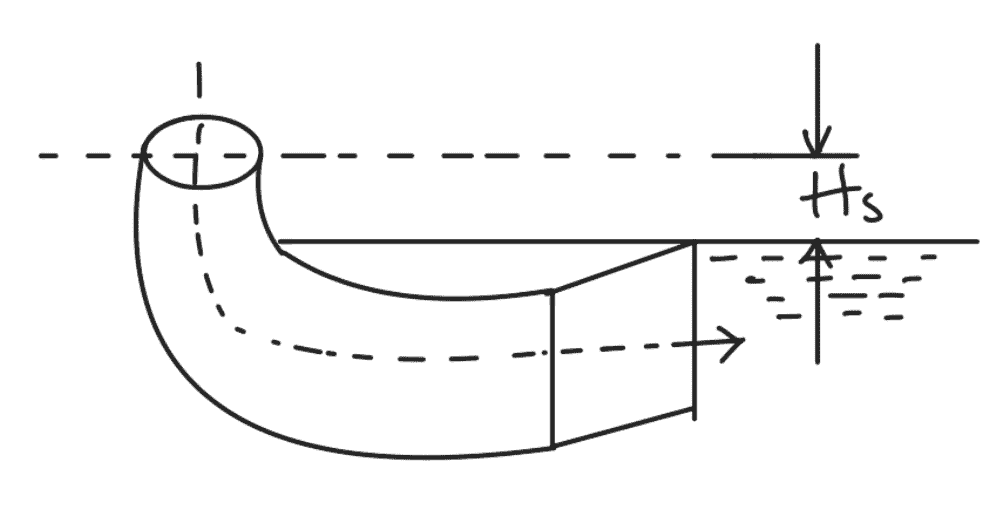
These different types of draft tubes are shown in the above schematic diagram. The conical draft tubes and Moody spreading draft tubes are the most efficient while simple elbow tubes and elbow draft tubes with circular inlets and rectangular outlets require less space as compared to other draft tubes.
Draft Tube Theory
Consider a capital draft tube as shown in the following figure.
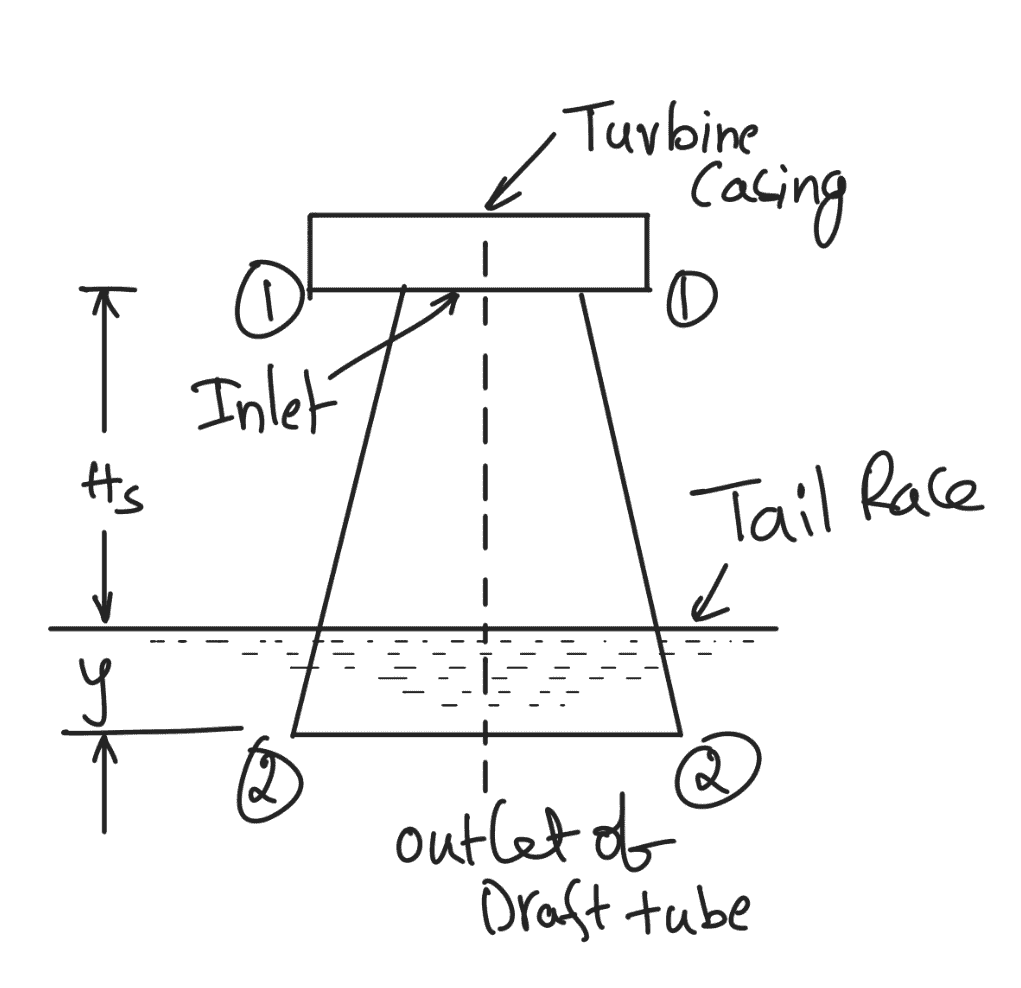
Let
Hs = Vertical height of draft tube above the tail race
y = Distance of bottom of draft tube from the tail race
Applying Bernoulli’s equation to the inlet (section 1-1) and outlet (section 2-2) of the draft tube and taking sections 2-2 as the datum line, we get

where hf = loss of energy between sections 1-1 and 2-2
But

Substituting this value of p2/ρg equation (a), we get

In equation (b), p1/ρg is less than atmospheric pressure.
Efficiency of Draft Tube
The efficiency of a draft tube is defined as the ratio of the actual conversion of the kinetic head into the pressure head in the draft tube to the kinetic head at the inlet of the draft tube. Mathematically, it is written as

Let
V1 = Velocity of water at the inlet of draft-tube
V2 = Velocity of water at the outlet of draft-tube
hf = Loss of head in the draft tube
Theoretical conversion of kinetic head into pressure head in draft tube is
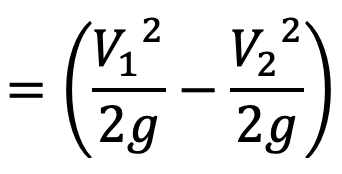
The actual conversion of kinetic head into pressure head =
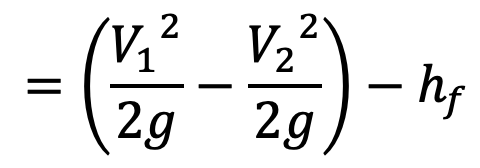
The Efficiency of the Draft Tube is
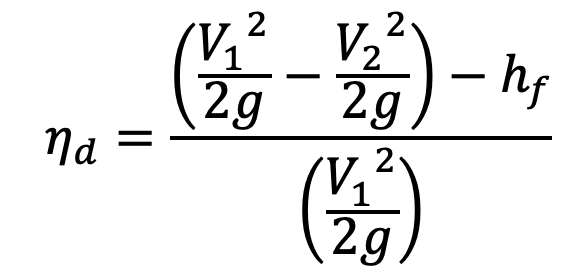
By using this Efficiency formula, we can design the draft tube by determining the Draft tube parameters. We can also calculate the Pressure head at the draft tube entrance or if we have other parameters. Let us know what you think about this article in the comment section below.

Leave a Reply